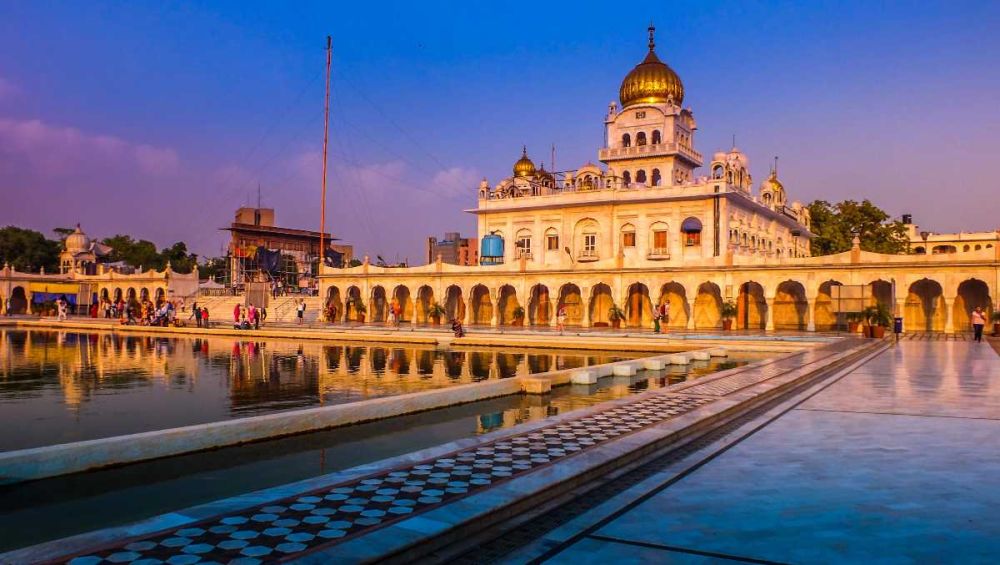

Gurudwara Bangla Sahib is one of the most prominent Sikh gurdwaras, or Sikh houses of worship, in Delhi, India. Its history dates back to the 17th century, originally a bungalow belonging to Raja Jai Singh, an Indian ruler. The eighth Sikh Guru, Guru Har Krishan resided here during his stay in Delhi in 1664. During that time, there was a smallpox and cholera epidemic and the Guru helped the suffering by giving aid and fresh water from the well at this house.
After the Guru's death due to the epidemic, Raja Jai Singh dedicated the site to the Guru, and thus the bungalow was converted into a gurdwara. Over the years, extensive additions were made. The gurdwara now includes a large temple, a sacred pond (Sarovar), a school, an art gallery, and a langar hall where thousands of meals are served to visitors regardless of race or religion.
Tourism at Gurudwara Bangla Sahib began as spiritual pilgrimages for Sikhs and followers of Guru Har Krishan due to its association with healing during the epidemic. Over the centuries, the importance of this spiritual site has transcended Sikhism, attracting visitors of all backgrounds.
Through Delhi's evolution into a cosmopolitan city and a hub of political, cultural, and economic activities, Gurudwara Bangla Sahib has become an essential landmark for tourists. It has been featured on city tours and travel guides as must-visit destination showcasing Delhi's cultural diversity and religious harmony.
In recent years, accessibility to Gurudwara Bangla Sahib has improved with better transportation links and visitor facilities while maintaining its serene and spiritual atmosphere. The focus on experiential travel has made the gurdwara more than just a place to see; it's a place to immerse in local practices and traditions.
Sustainable tourism is also becoming a priority, with Gurudwara Bangla Sahib upholding principles of community service and environmental responsibility—especially through its free community meals (Langar) that cater to thousands every day with minimal waste.
The gurdwara has also embraced technology with virtual tours and online resources allowing a wider audience to explore the site remotely, attracting global interest.
Gurudwara Bangla Sahib is open to visitors 24 hours a day, seven days a week. There is no entrance fee, although visitors must adhere to a modest dress code and cover their heads as a sign of respect. Free guided tours are often available for those interested in learning more about the site’s history and Sikhism.